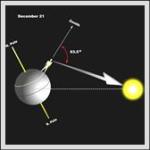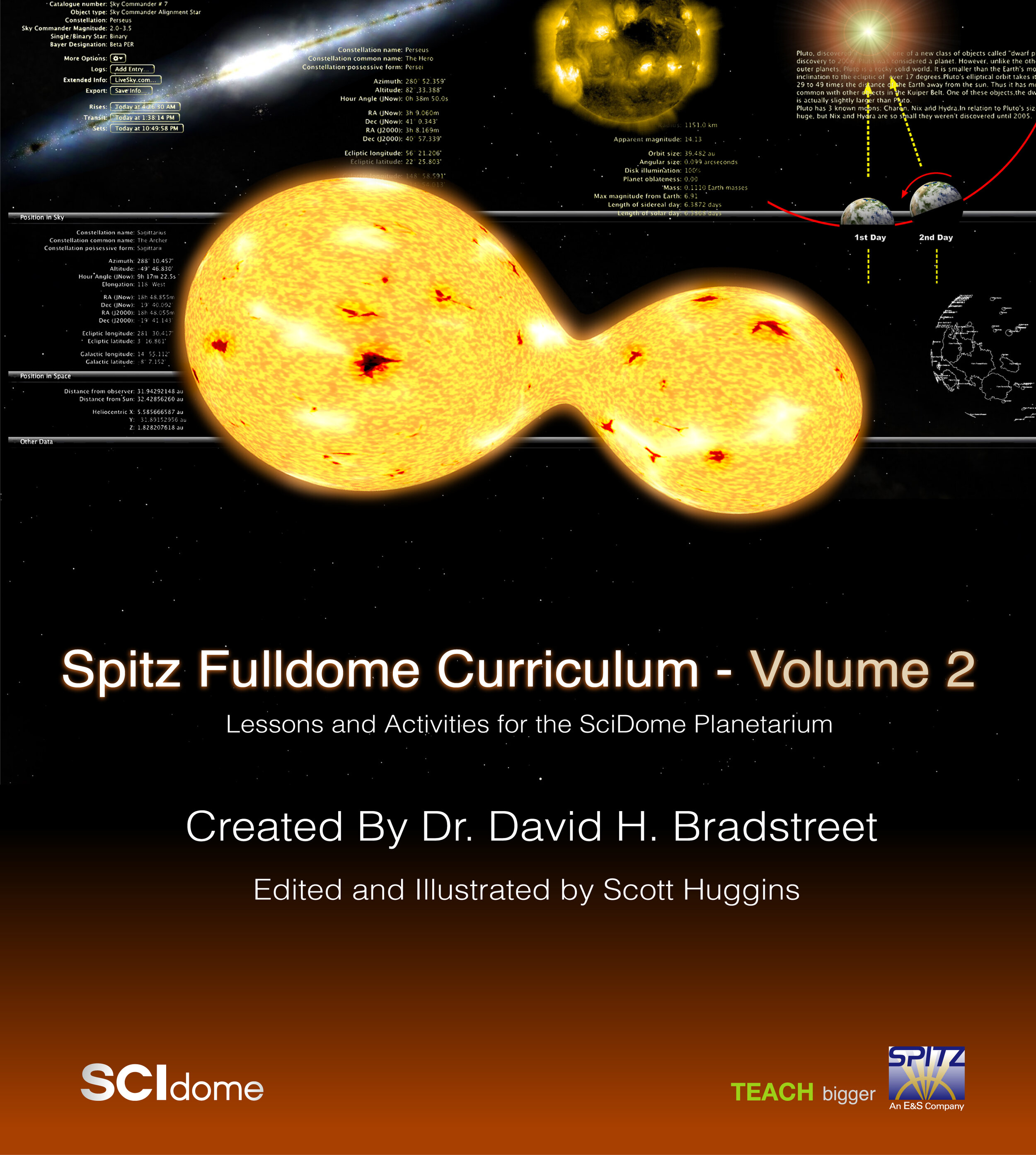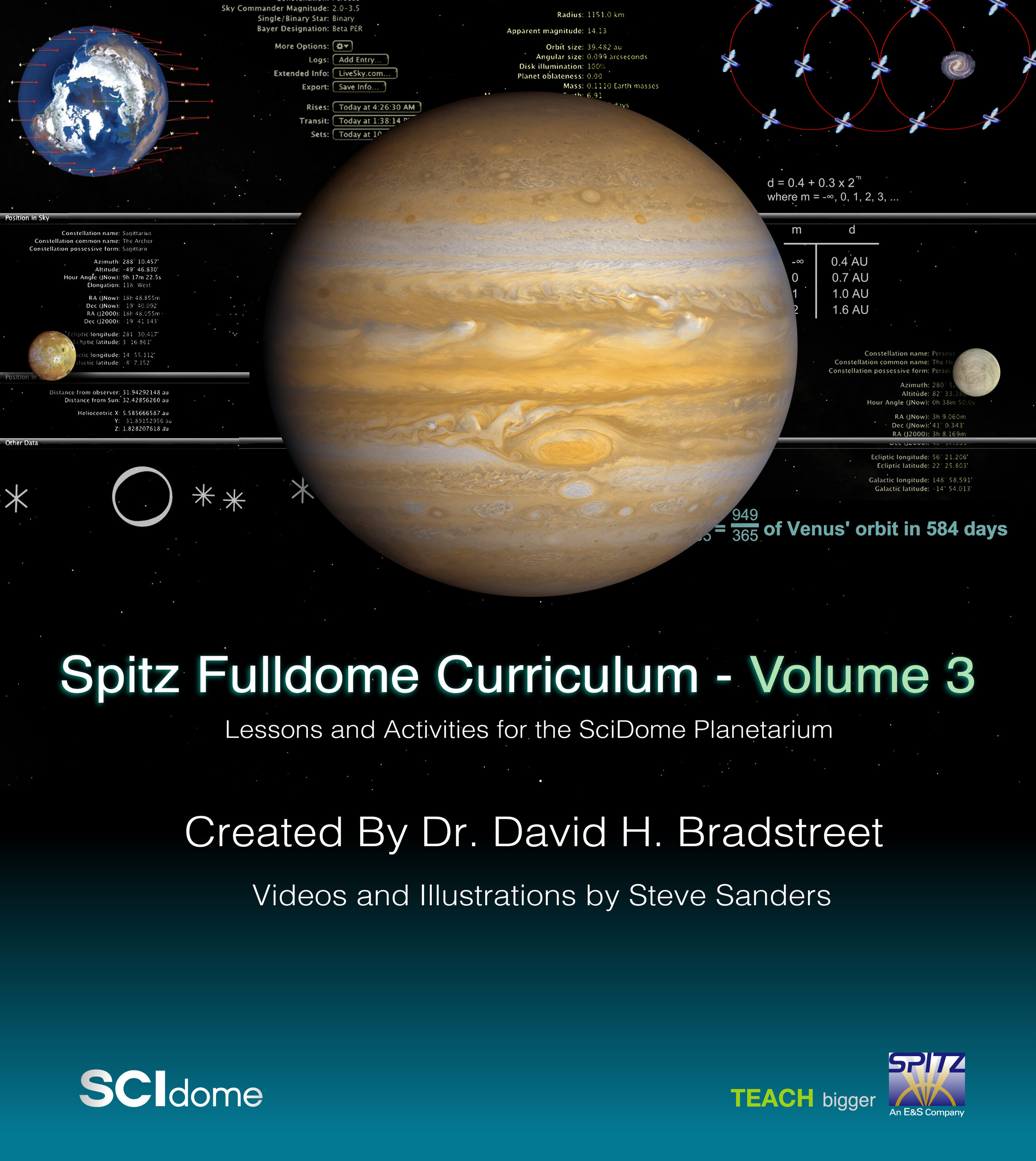The first planetarium resource of its kind, the Spitz Fulldome Curriculum is an unprecedented series of classes and short demonstrations designed for teaching astronomy in an immersive dome setting.
Created by Dr. David H. Bradstreet, Professor of Astronomy and Physics and Observatory/Planetarium Director at Eastern University, the Curriculum uses the spherical, 3D qualities of the dome to explain the most commonly taught planetarium subjects, including phases of the moon, seasons, coordinates, planetary motion, time, eclipses and much more.
Spitz Fulldome Curriculum Volumes 1 - 4 shipped to all SciDome planetariums. Volume 5 is in production.
Click on the images below to view/download a PDF summary of each volume.
Dr. Bradstreet’s Fulldome Curriculum is an incredible asset to any planetarium. His lessons are concise, direct, and immediately useful in the dome. He does an amazing job of utilizing the unique capabilities of the SciDome to teach astronomy in a way that is both engaging for the student, and often times, instructional to the teacher!
-Dr. Kelly Herbst,
Astronomy Curator,
Abbitt Observatory & Planetarium,
Virginia Living Museum
Photo by Scott Huggins, Spitz Inc.
Photo by Scott Huggins, Spitz Inc.
Once again Dr. David Bradstreet has created a Fulldome Curriculum of astronomy lessons and mini-lessons that are simultaneously educationally rich, visually spectacular, and entertainment-rich. Some include truly one-of-a-kind visualizations of difficult astronomical concepts, like his lessons about eclipse seasons and timekeeping. And his two lessons, the Lincoln Almanac Trial and astronomical history of Boston, are wonderful examples of how astronomy can be connected to other educational disciplines.
Todd Young, Ph. D.
Professor of Physics and Astronomy,
Fred G. Dale Planetarium, Wayne State College
One of the most exciting things about FDC is that it inspires me to go further.
Browsing through Dave’s Curriculum has stimulated me to invent new methods that fit my teaching style and needs, and all his examples are easily modified. You can’t do that with a pre-packaged video in a classroom, or with a full-dome movie!
Keith Johnson
Planetarium Director (Retired)
Edelman Planetarium
Rowan University
Coming from a non-astronomy background, I have spent 30+ years working in the planetarium and always assumed I had developed a fairly strong knowledge base in astronomy. I am always thrilled when FDC teaches me something new or helps me develop an even deeper understanding of our universe.
The work that Dr. Bradstreet and Steve Sanders are doing with this curriculum is ground-breaking. Many of these concepts have never before been so brilliantly presented in the classroom or the planetarium.
Linda Powell
Planetarium Director & Museum Educator
The State Museum of Pennsylvania
The Fulldome Curriculum (FDC) harnesses the full capacity of the SN software to teach concepts that cannot be readily taught, or understood, using traditional methods. Considerable thought and expertise went into developing these lessons that will be used by novice and expert planetarium instructors. Previously I have only ever briefly mentioned precession of the North Pole briefly as I lacked the tools to teach it in an accessible way. With the FDC, I can immediately use a tested and polished lesson to teach a complex astronomical concept, such as precession of the North Pole.
With a planetarium in the heart of a university campus, I am constantly searching for college level material as well as programming that cross disciplines. The FDC fills that need and will allow us to bring more students into the planetarium. The FDC is another step into transforming the planetarium into an immersive classroom in which our students will learn history, geology, and physics, as well as astronomy.
Laura J. Megeath
Coordinator of the Appold Planetarium
Lourdes University
+ Seasons

Photo by Scott Huggins, Spitz Inc.
Why does the Earth experience seasons? What’s the tilt of the Earth’s axis got to do with anything? What is it tilted with respect to? Why does the Sun appear at different altitudes at different times of the year? What is insolation? What do the apparent daytime paths of the Sun look like at the solstices and equinox at 40° N latitude? At the equator? At the North Pole? At the Arctic Circle? At the South Pole? Why does the amount of daylight vary through the year at one location? Why do different latitudes experience different amounts of daylight?
+ Eclipses

Photo by Scott Huggins, Spitz Inc.
This class teaches the fundamentals of eclipse shadows and then proceeds to illustrate why we don’t have eclipses every month (really every two weeks!). It then concludes with examples of a solar eclipse observed from in the path of totality and just outside of it, an annular eclipse and finally a total lunar eclipse. It assumes that the very basics of the conditions required for eclipses have been covered before coming to the planetarium, namely, that in order to have eclipses the Moon must be New for a solar eclipse and Full for a lunar eclipse. Beyond that nearly everything else is covered in depth in this class.
+ Eclipsing binaries

Photo by Scott Huggins, Spitz Inc.
As a binary star astronomer, I love eclipsing binaries, and now you will too! This minilesson thoroughly explores the mysteries of these systems, their light curves and peculiar orientations, and then gives unique three-dimensional (accurate and to scale!) rotating models (thanks to Steve Sanders) of some of the most interesting types! Since more than 50% of all stars in the skies are multiple star systems and they’re the only way that we can determine masses for stars, eclipsing binaries are of paramount importance in astronomy!









